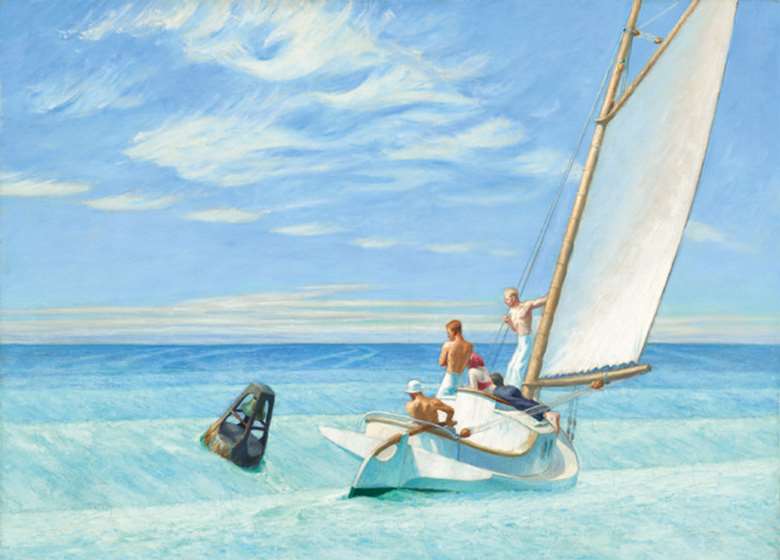Drama Strategy: Still Image
Patrice Baldwin
Monday, October 1, 2018
A ‘freeze frame’ is one way of acquiring a still image. Strictly speaking, ‘freeze-frame’ refers to freezing movement. The students obey an instruction, to ‘freeze’ simultaneously. They hold a moment still physically and stay ‘in the moment’ cognitively and affectively.

Shutterstock/Everett Art
I ask students to ‘Make (or devise) a still image’ but I don't ask them to, ‘Make a freeze-frame’. ‘Making’ is a process that demands more than just ‘freezing’.
Teaching points
Keeping still is hard. It requires physical and emotional control.
- Don't accept still-ish. Insist students keep as still as possible, whether ‘freezing’ or presenting a prepared still image;
- Enable students to practicse holding their bodies really still through warm up activities and games that involve freezing movement, e.g. freeze when the music stops
- With younger children, you might say, ‘be as still as a photograph’
- Discourage bodily positions that can't be held still for long. Let students relax and reposition themselves if necessary for comfort.
Making still images
Making still images can employ various types of thinking and result in different levels of challenge, depending partly on whether the students are working individually, in pairs or groups. Recreating a known image is usually easier than creating an original one. Devising a symbolic image is generally more demanding than producing a naturalistic one.
Individually: Ask students to make themselves into a still image that portrays a character's inner feelings. They will draw on their knowledge and understanding of the character and his/her feelings, decide what is significant and portray it statically. They will need to use creative and critical thinking skills.
In pairs: One person is the sculptor and the other a lump of clay. The sculptor gently moulds the compliant clay into a still image. Alternatively, the sculptor can only give verbal instructions to the clay (without gesturing) and the clay follows instructions. This activity demands more of the sculptor than the clay so swap over afterwards. The drama can provide a meaningful context and reason for sculpting – a weak king commissions a statue that portrays him as powerful.
Small groups: Ask them to devise a still image that depicts a key moment in the drama. Together, they need to consider various key moments and select one, listen to and evaluate each other's ideas, justify and agree choices about what to include, translate ideas into physical form, evaluate the outcome together and maybe refine the image. During this process they are deepening their knowledge and understanding of key moments.
Small groups: Ask them to devise a symbolic, rather than naturalistic, still image such as a key moment shown as a dream.
Whole class tableau: A defined space becomes the deck of a boat. In turn, the students place themselves as fleeing refugees. They stay in position until everyone has entered. Ask each person to speak their character's inner thoughts as they freeze into position.
Sequencing images
Ask groups to create more than one image and perform them in sequence
- Three images that represent different points in time, e.g. past, present, future
- Two images offering alternative ‘next episodes’ in the drama
- Two images presenting ‘the reality’ and ‘the ideal’ (sometimes used in psychodrama).
If they present a sequence of images, they need to consider how they transition between them.
Performance carousel
This is a way all groups can present their image sequences:
- Numbered groups space out and sit on the floor – they should be able to see each other
- Group 1 moves slowly into their still image and freezes. They hold their freeze-frame for a few seconds before melting back onto the floor
- Group 2 now rises slowly into their image and freezes
- Repeat until all groups have presented their images in turn.
Extending and exploring a still image
- Invite questions to characters within the image, e.g. one question to each character
- Others can add themselves to a still image, e.g. a road accident is depicted and onlookers add themselves
- Accompany images with sounds or words, e.g. sound effects, captions, dialogue, narration
- Bring the image to life and improvise a scene.
Using real images to stimulate drama
Images come in many forms and provide inspirational starting points for drama: photographs, commemorative statues, tapestries, wall paintings, stained glass windows and so on.
Some texts are full of visual imagery that can be brought alive physically, like Tennyson's The Lady of Shalott. Look at Edward Hopper's paintings or Anthony Browne's and Armin Greder's picture books – they are evocative, with much inferred rather than stated.

